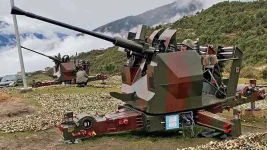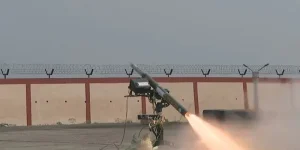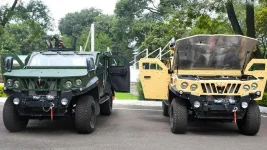- Views: 143
- Replies: 1
The Indian Army is advancing its artillery modernisation programme with a call for a new generation of versatile rocket launchers.
On May 16, 2025, the army issued a Request for Information (RFI) seeking proposals from manufacturers for an advanced, pod-based Multiple Launch Rocket System (MLRS).
This initiative falls under the 'Make in India' policy, strongly encouraging domestic manufacturing and technological development. The proposed system is intended to significantly augment the firepower of the Artillery Regiment.
It will be designed to handle various rocket calibres and operate effectively across India's diverse terrains, addressing the nation's strategic defence needs in an evolving global security scenario.
The push for such systems underscores the increasing importance of long-range precision firepower in modern military strategy.
The detailed RFI specifies rigorous criteria for the new MLRS, highlighting the need for adaptability, high mobility, and seamless integration with current and future military hardware.
A key requirement is the system's ability to fire multiple rocket calibres – specifically 122mm, 214mm, and 300mm or larger. This will enable the launch of a wide array of munitions, including advanced loitering munitions and all existing or forthcoming ammunition compatible with these sizes.
Such multi-calibre functionality offers significant operational flexibility, allowing the army to engage different types of targets with enhanced precision and effectiveness.
The system's pod-based design, similar in concept to systems like the American M142 HIMARS, is expected to allow for quick reloading and more efficient battlefield logistics, thereby improving overall operational tempo.
Engineered to operate throughout India's varied geographical conditions, the MLRS must demonstrate reliable performance in plains, semi-desert regions, deserts, and challenging high-altitude zones up to 5,500 metres.
This specification directly addresses the army's operational requirements in demanding environments, from the deserts of Rajasthan to the Himalayan mountain ranges, including critical high-altitude areas along the Line of Actual Control (LAC) with China and the Line of Control (LoC) with Pakistan.
For rapid deployment and the ability to quickly relocate to avoid enemy counter-attacks, the system will be mounted on a robust 6×6 or 8×8 high-mobility vehicle platform, ensuring excellent cross-country manoeuvrability.
A crucial aspect of the new MLRS will be its integration with Project Shakti, the Indian Army’s indigenous Artillery Combat Command and Control System (ACCS). This digital network facilitates coordinated operations by linking the MLRS with surveillance drones, target-locating radars, and command centres for swift and accurate targeting.
The RFI also calls for a high degree of automation, navigation capabilities using GPS, GLONASS, and India's own IRNSS (NavIC) satellite systems, and compatibility with smart, precision-guided munitions.
These advanced features are in line with global trends towards highly accurate artillery and will enable the MLRS to conduct deep strikes into enemy territory while providing tactical commanders with greater operational flexibility.
This new MLRS initiative will leverage the success and experience gained from the indigenously developed Pinaka Multi-Barrel Rocket Launcher (MBRL). The Pinaka system has seen significant evolution, from its original 214mm Mk-I version with a 45 km range to the Guided Pinaka (90 km range), with further developments underway for 120 km and 300 km variants.
The proposed MLRS aims to consolidate various calibres by incorporating 122mm rockets (currently used by systems like the BM-21 Grad), the 214mm Pinaka rockets, and 300mm rockets (comparable to the Russian Smerch system), while also supporting future ammunition types.
This unified approach will ensure interoperability with existing artillery regiments and capitalise on India’s expanding capabilities in rocket artillery technology, which has already seen systems like Pinaka being exported to nations such as Armenia.
Reflecting the government's 'Atmanirbhar Bharat' (self-reliant India) vision for the defence sector, the RFI stipulates a minimum of 50% indigenous content in the new MLRS. This mandate is designed to foster collaboration between the Defence Research and Development Organisation (DRDO) and Indian defence companies, including major players like Tata Advanced Systems, Larsen & Toubro, and Bharat Earth Movers Ltd. (BEML).
The 'Make in India' initiative in defence has already led to a significant increase in domestic production and a reduction in import dependency, bolstering national security and economic growth.
Prospective vendors for the MLRS are also required to outline plans for comprehensive lifecycle support, integrated diagnostic systems, and field maintenance capabilities to ensure the long-term operational readiness and sustainability of the system.
The ability to launch loitering munitions will further enhance the system's versatility, allowing for precise engagement of fleeting or concealed targets.








